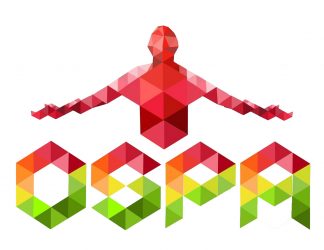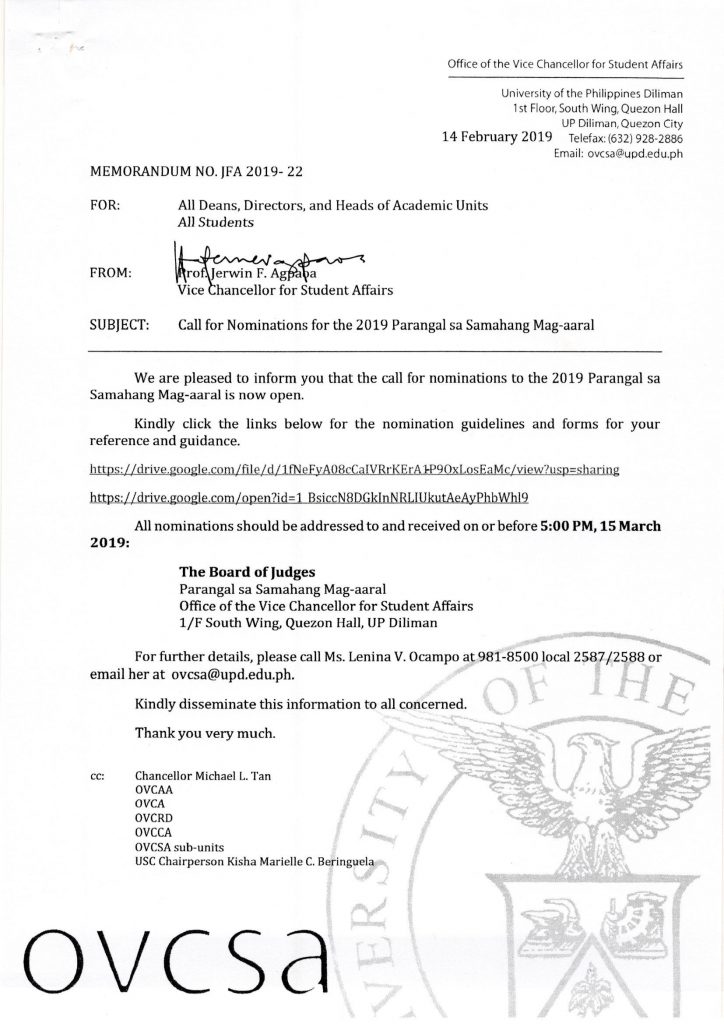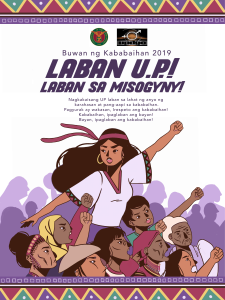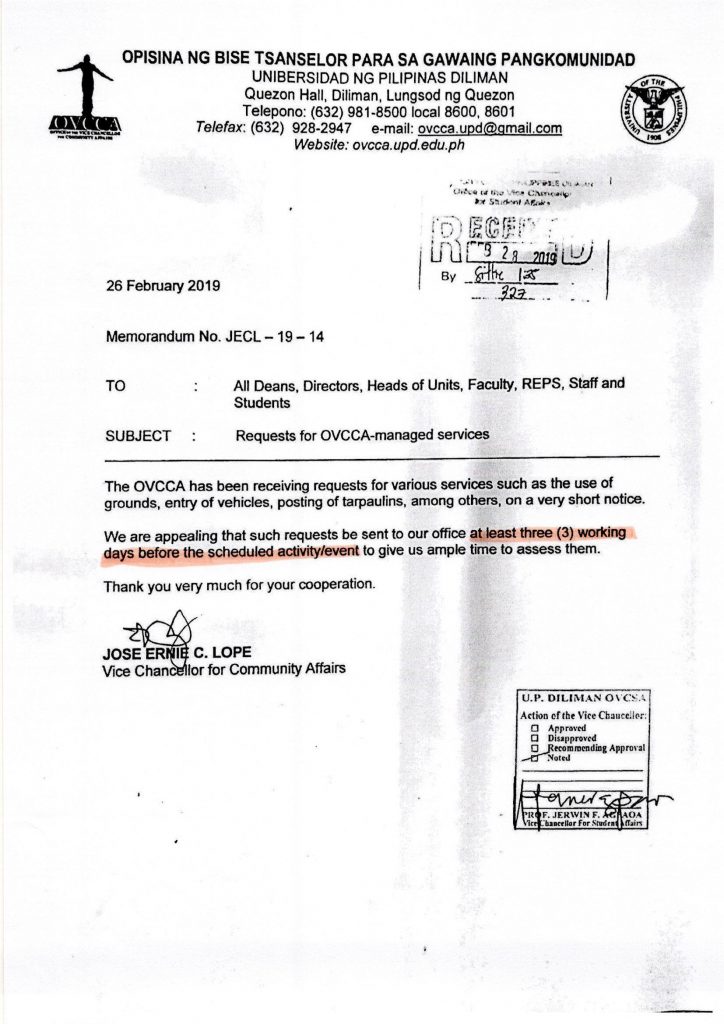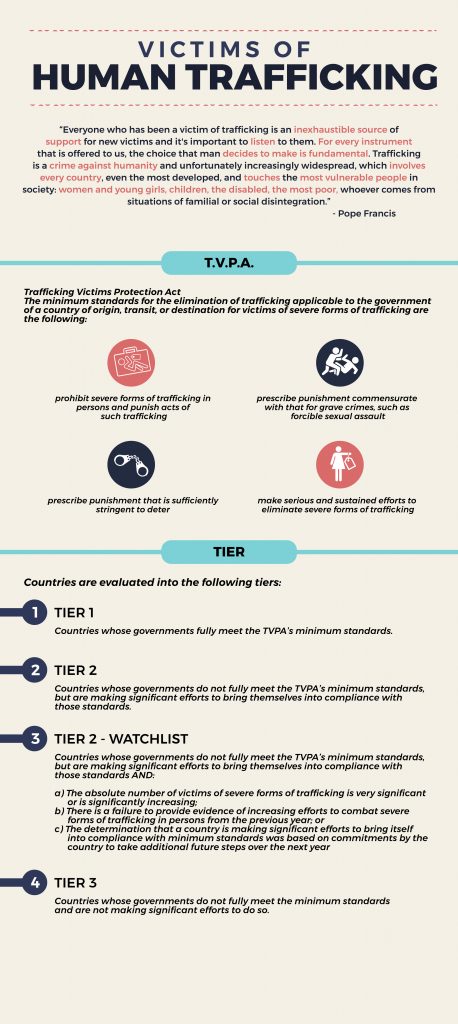
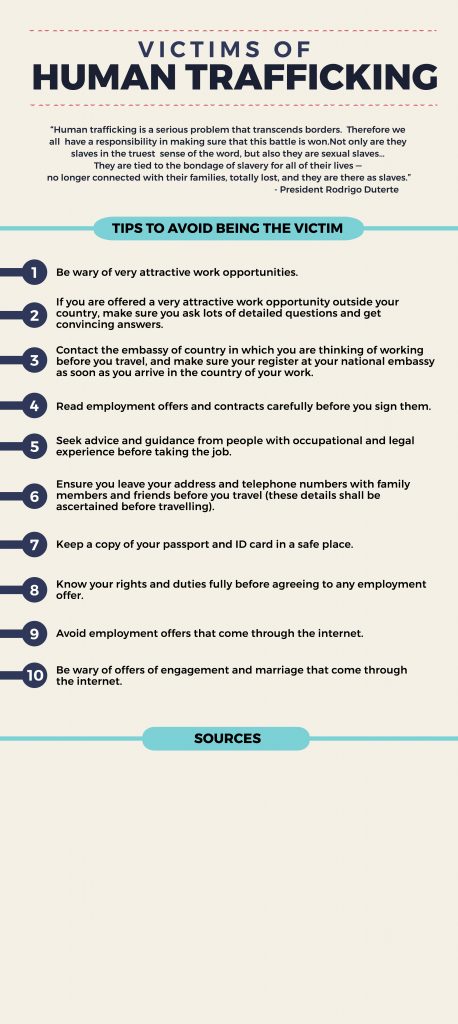
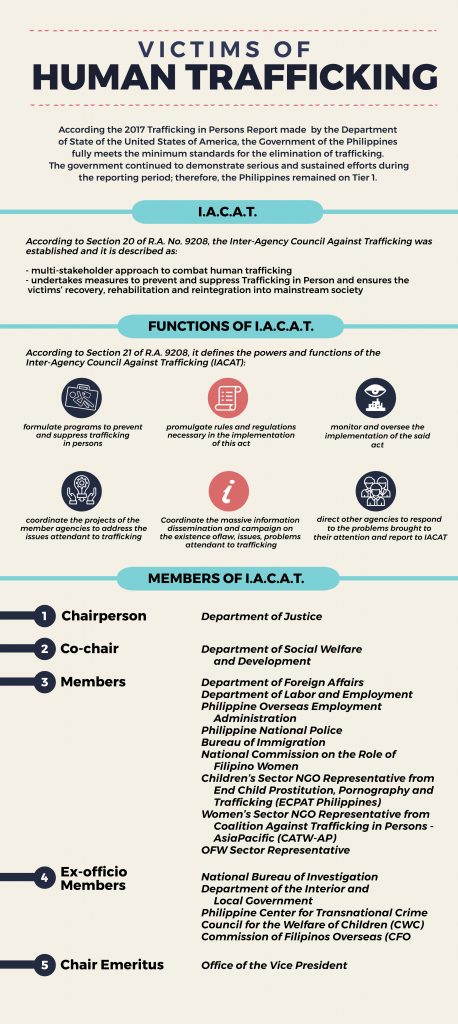
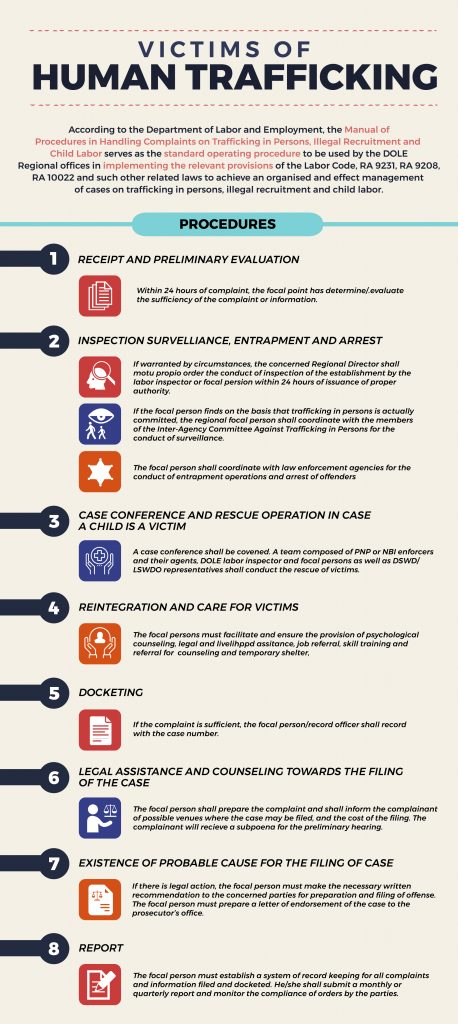
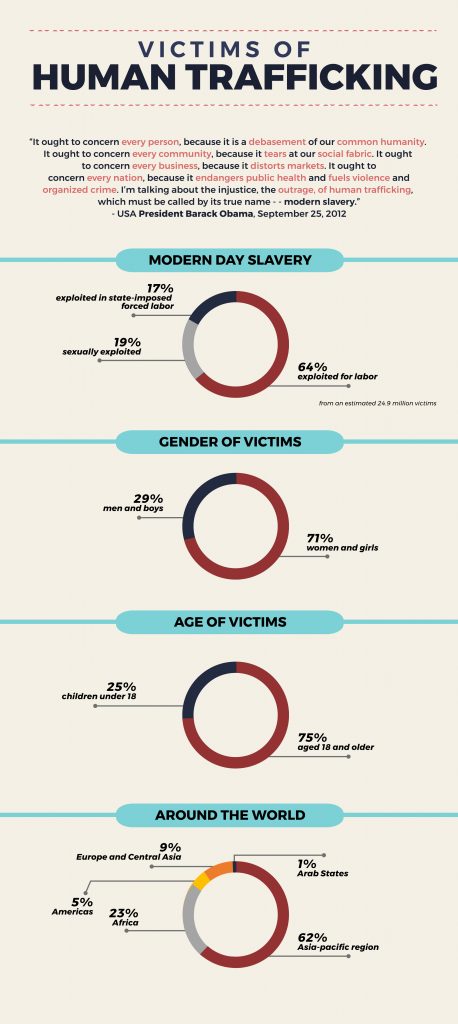
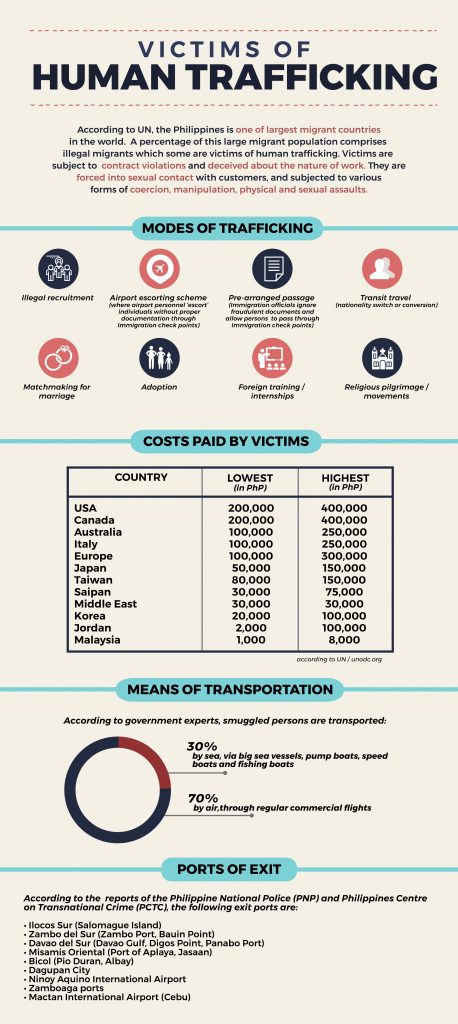
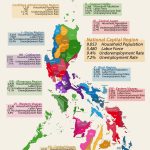

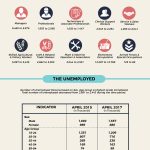
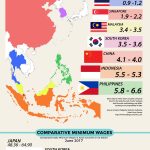
Systemic violence remains rampant throughout the world today. All around the world, and most especially in third world countries like the Philippines, such violence persist due to prevailing power structures, and as such lingers at the core of class struggle. These infographics, which tackle such forms of violence like extra-judicial killings, domestic violence, human trafficking, and labor oppression, set the backgrounds and reflect the figures from which we draw the realities. These are all manifestations of how the Philippines, along with other developing countries, should take strides into putting into place legal and structural protections to, at least, inhibit, and at most, eradicate these forms of violence.
At the centre of such discussions is what a particular country’s government is doing in order to combat such atrocities. As its constituents, we look to the state to draft, enact, and enforce public policies for the protection of its peoples. As these graphics would show, there are indeed laws and policies in place. However, over time, such laws begin to be ineffective, leaving out nuances which come with the changing time. That, or as laws improve over time, figures would somehow dip, yet slowly creep back up as the law suits into adjustment. One example is our existing policies against domestic violence. While we reaped victories in the improvement of the law by means of, say, recognizing economic abuses in the Republic Act 9262 in 2004, or in the enactment of the Magna Carta for Women in 2009, progress by numbers were disappointingly short-lived. Reports of domestic abuse in the period following these developments decreased, but slowly increased back as time went on.
Such trends do not speak of the whole picture, only what is reported and so is reflected in numbers, but what it implies is that, while the first line of defense remains legal, such problems persist because it is, as the Philippine Commission on Women states, a “pervasive social problem”.
Indeed, while the law will always be upheld and enforced at every possible juncture, it only helps those who seek its deliverance, those who report their cases. Unfortunately, in more times than the state would want to hope, affected parties don’t report anymore. This may be due to various reasons, but all boiling down on prevailing power structures. Women don’t report their sexual abusers, in fear of the latter fighting back, even if it’s their own husbands, or their own family members. Labor groups are discouraged, even barred from unionizing which should abet their struggle for better workers’ rights, in fear of getting axed from their jobs. People accused, albeit how mildly or imprecisely, of patronizing drugs would rather turn themselves in, in fear that, should they remain on that list longer, they would perish as the war on drugs rolls on its dirty path.
And certainly many more in shrouds, which aren’t to say that any figure drawn and tallied from formal reports should be interpreted as false or inaccurate, but they also shouldn’t be taken on face value, without at least seeing the bigger picture: knowing all factors involved, legal and otherwise. Ultimately, these
graphics still, at their best capacity, reflect the reality in our countrymen, mostly the impoverished, live in. Thus, the steps we take in ensuring that these are eliminated in time are crucial, because they are steps which largely involve us, actors of change, going out of our comforts to immerse in the basic masses. We are expected to see how the law trickles down to the poorest of the poor, and, along the way, it passes through the hands of people in power. This is why all counts of violence are deemed state sanctioned. This is how the truth behind the numbers and statistics are kept.
This is in part saying that militancy is key in enacting change. These infographics help us in our immersion in that it manifests what the law includes, and what it neglects, or how and to whom it is both partial and impartial. Change is enacted both within the doors of the legislators, and under the roof of the most impoverished farmers, workers, wives, children, women, citizen. It is both here and there: here, within the academe where inferences are formed out of historical bases, and there where empathy is cultivated out of living and struggling alongside the basic masses. Once the connection is drawn, it is up to us now, the decisive self, to synthesize, to act, and to struggle, consistently and even endlessly, with these people for the change we seek.
Resource:
“Violence Against Women (VAW)”. Philippine Commission on Women, 2010. Accessed 05 March 2018.
To review the guidelines, click: https://drive.google.com/…/1_BsiccN8DGkInNRLIUkutAeAyP…/view
For the Nomination Form: https://drive.google.com/…/1fNeFyA08cCaIVRrKErA1-P9OxL…/view
The UP Diliman Gender Office cordially invites you to the UP Diliman Women’s Month 2019 this whole month of March. Below is theme of this year’s celebration:
Nagkakaisang UP laban sa lahat
ng anyo ng karahasan at
pang-aapi sa kababaihan.
Pagyurak ay wakasan,
Irespeto ang kababaihan!
Kababaihan, ipaglaban ang bayan!
Bayan, ipaglaban ang kababaihan!
We invite everyone to the UP Diliman International Women’s Day program on March 8 (Friday) at Quezon Hall. Attached is the Memorandum from the Office of the Chancellor inviting and enjoining all UP Diliman faculty, staff, REPS and students to participate in this activity on official time.
We also invite everyone to participate in the activities and events led by the colleges and units within UP Diliman, which are detailed in the official UP Diliman Women's Month 2019 Calendar of Activities collectively created by the GAD Committees of various colleges, units, and offices in UP Diliman.
Finally, we encourage all colleges and units to print and display our official tarp (tarp design enclosed) in support of and solidarity with UP Diliman Women’s Month 2019.
Thank you very much and we look forward to your positive response and support. For details and inquiries, kindly contact the UP Diliman Gender Office at local 2467 or visit the UP Diliman Gender Office Facebook Page.
Respectfully,
Sgd.
NANCY KIMUELL-GABRIEL, Ph.D.
Coordinator
